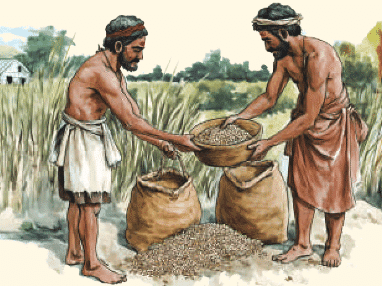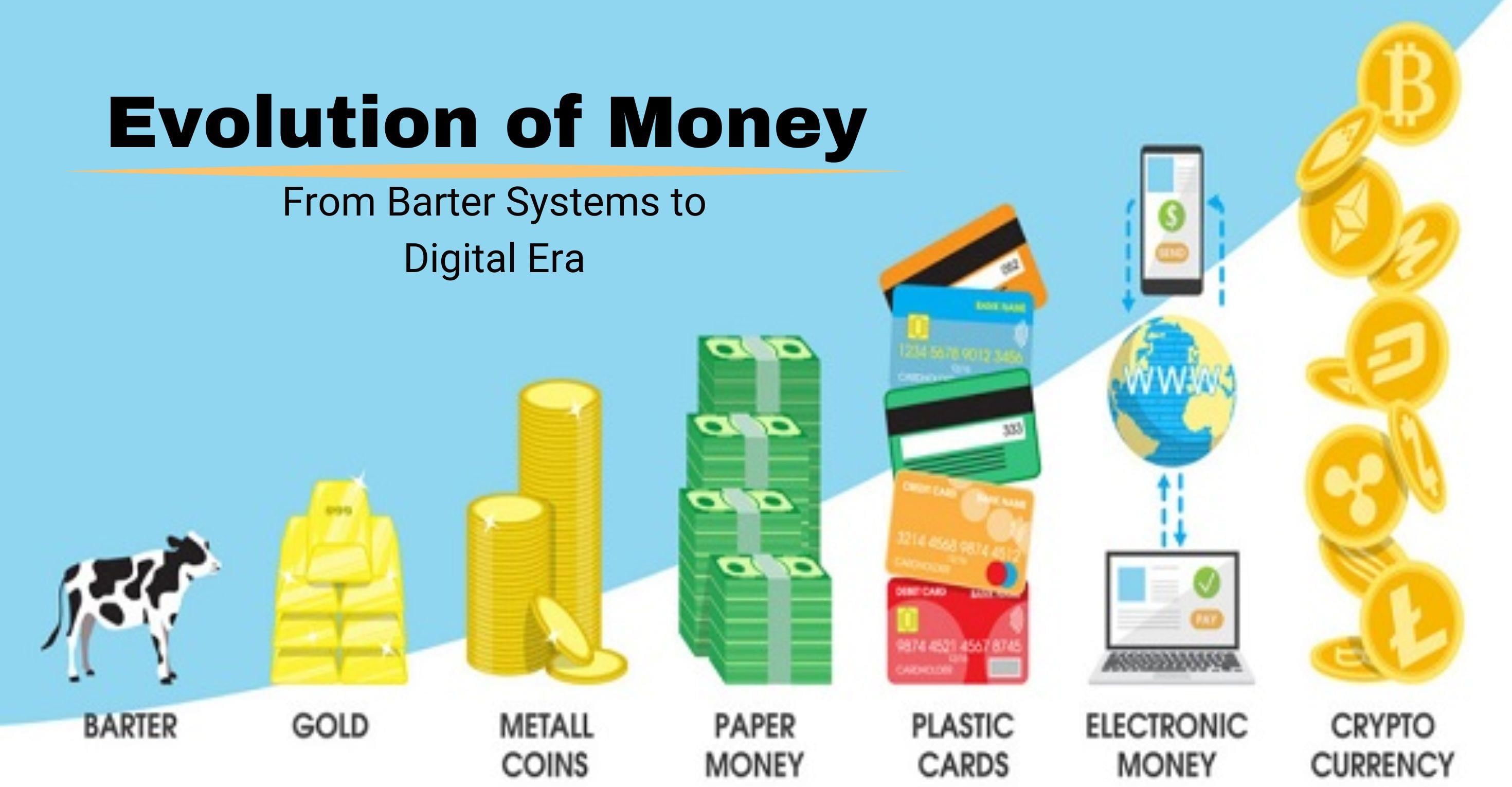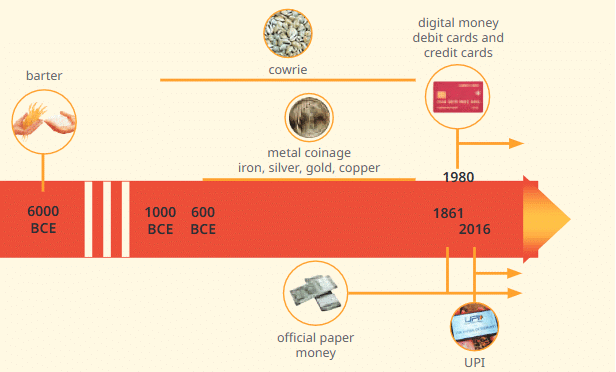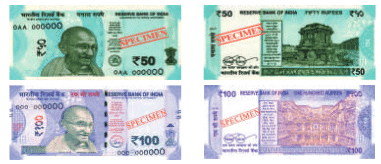NCERT Solutions for Class 7 Social Science Chapter 11 From Barter to Money
The Big Question (Page 229)
Q1: How did exchange take place before money?
Ans: Before money came into existence, exchange took place through the barter system. In this system, people directly exchanged goods and services for other goods and services.
For example, a farmer might exchange wheat for clothes with a weaver. However, this system required a double coincidence of wants, meaning both parties had to need what the other offered at the same time.
 Barter System
Barter System
Q2: Why did money come into existence?
Ans: Money came into existence to overcome the limitations of the barter system, such as the difficulty of finding someone who wanted what you had and had what you wanted. Money made trade more convenient, efficient, and fair, as it acted as a medium of exchange, a store of value, a unit of account, and a standard of deferred payment.
Q3: How has money transformed into various forms over time?
Ans: Money has evolved significantly over time. It started with the use of commodities like grains or cattle, then moved to metallic money such as gold and silver coins. Later, people began using paper currency issued by governments. In modem times, money has taken digital forms like debit/credit cards, mobile wallets, UPI, and cryptocurrencies, making transactions faster and more secure.
 Evolution of Money
Evolution of Money
Back Question (Page 244 & 245)
Q1: How does the barter system take place and what kinds of commodities were used for exchange under the system?Ans: The barter system is an exchange method where people directly trade goods and services without using money. In this system, if a person wants something they don’t have, they offer something they own in exchange for it. For example, if a farmer has wheat but needs a pair of shoes, they might offer some wheat to a shoemaker in return for shoes.
Various commodities were used for exchange in the barter system. These could be everyday items or goods that were widely accepted and useful. Common items included:
- Cattle: Cows, goats, and horses were exchanged for various goods and services.
- Food Grains: Wheat, rice, and other grains were commonly used, especially in agricultural societies.
- Cloth: Fabrics and garments were exchanged, especially in regions with textile industries.
- Salt: This was a valuable commodity in ancient times, used for both food preservation and seasoning.
- Cowrie shells: These shells were used as a medium of exchange in various cultures, especially in Africa and parts of India.
Q2: What were the limitations of the barter system?
Ans:Although the barter system was a common way of exchange, it had several limitations:
- Double Coincidence of Wants: For a successful exchange, both parties must have what the other wants. For instance, if you have wheat but need shoes, you must find someone who has shoes and needs wheat. This often made trade difficult.
- Lack of Common Measure of Value: There was no standard way to measure the value of goods. For example, how many bags of wheat should be exchanged for a pair of shoes? The value of goods could vary greatly depending on the situation, leading to disputes.
- Indivisibility: Some goods could not be divided for exchange. For example, if a person wanted to exchange an ox for several goods, it would be hard to split the ox without losing its value.
- Portability: Carrying large or bulky goods for trade, like cattle or grains, was not convenient, especially for long distances.
- Durability: Many commodities used in the barter system, like food items, could spoil or get damaged, making them unsuitable for long-term storage.
These limitations led to the development of money as a more efficient medium of exchange.
 Journey of Money
Journey of Money
Q3: What were the salient features of ancient Indian coins?
Ans: Ancient Indian coins had several important features that made them unique:
- Materials Used: Coins were made from various metals, including gold, silver, copper, and alloys. The use of metals like gold and silver made them valuable.
- Designs and Symbols: Coins often had symbols, images, or deities engraved on them. For example, the coins of the Maurya Empire featured the image of the lion or the peacock, and those of the Chalukyas had the Varaha image (the boar avatar of Lord Vishnu).
- Standardization: Coins were minted in specific weights and sizes to maintain uniformity in transactions.
- Names and Inscriptions: Rulers often inscribed their names or titles on the coins, which helped identify the issuing authority. Some coins also featured the name of the place or kingdom.
- Regional Variations: Different kingdoms had their own coins, often reflecting local symbols or deities. For instance, the Chola dynasty used coins with symbols like a tiger.
These features helped establish coins as a reliable and standardized form of currency for trade and transactions.
Q4: How has money as a medium of exchange transformed over time?
Ans: The medium of exchange has undergone significant changes over time. Here’s how money has transformed:
- Barter System to Commodity Money: Initially, people used the barter system, exchanging goods directly. Later, commodities such as salt, cattle, and cowrie shells became money because they were widely accepted.
- Introduction of Coins: With the rise of empires and trade, coins made from metals like gold and silver were introduced. These coins were easier to carry, had a standardized value, and were accepted across regions.

Roman Gold Coins
- Paper Currency: In the 18th century, paper money was introduced in India. It was easier to carry and store than coins, especially for large transactions. Paper currency also helped in managing the growing economy.
- Digital Money: In modern times, digital money has emerged. People now use bank transfers, debit/credit cards, and mobile apps like UPI (Unified Payments Interface) for transactions. This has made payments faster and more convenient, reducing the need for physical money.
Money has evolved from a physical form to a digital one, making exchanges quicker and more efficient, and allowing for transactions across the globe without the need for physical exchange of goods.
Q5: What steps might have been taken in ancient times so that Indian coins could become the medium of exchange across countries?
Ans: In ancient times, for Indian coins to become the medium of exchange across countries, the following steps might have been taken:
- Acceptance Across Regions: Indian rulers, especially during the Mauryan and Gupta periods, ensured that their coins were accepted across neighboring kingdoms and regions. The value of these coins had to be recognized and trusted by traders from different areas.
- Trade Networks: India had extensive trade networks with regions like the Roman Empire, Southeast Asia, and Central Asia. Indian merchants would trade goods such as spices, silk, and textiles. Coins from powerful Indian kingdoms like the Mauryas and the Kushans became accepted in these international trade routes.
- Standardized Weights and Measures: To ensure the smooth exchange of coins across countries, Indian rulers standardized the weight and purity of their coins. This made it easier for merchants to understand the value of Indian coins in their local currencies.
- Minting Coins with Universal Symbols: Indian rulers minted coins with symbols of gods, animals, and rulers that were recognized by people from different cultures. These symbols helped increase the trust in Indian coins.
- Establishing Diplomatic Relations: Diplomatic ties with neighboring countries would ensure that Indian currency was accepted in foreign markets. The exchange of goods, services, and cultural values created an environment where Indian coins were seen as a valuable and trustworthy medium of exchange.
Through these steps, Indian coins became widely accepted and used in international trade, making them an essential part of ancient global commerce.
 Paper Currency
Paper Currency
Q6: Read the following lines from the Arthashastra. “An annual salary of 60 paṇas could be substituted by an adhaka of grain per day, enough for four meals…” (One adhaka is equal to about 3 kg) What does this indicate about the value of one pana?
Ans: This passage from the Arthaśhāstra indicates that the value of one pana can be understood by comparing it with the amount of grain (in this case, adhaka) that could substitute for it.
- One pana’s Value: The passage suggests that an annual salary of 60 panas could be substituted by an adhaka of grain per day, which is about 3 kg of grain for four meals. If we break it down, this means that 60 panas is roughly equivalent to an annual supply of around 1,095 kg of grain (since 365 days are considered in a year).
- Comparison: The value of one pana is calculated by dividing the total grain supply by the number of panas. In this case, 1 pana is equivalent to about 18 kg of grain per year or the amount of grain needed for a few meals every day.
- Understanding the Value: This indicates that a pana was seen as a valuable unit of currency during ancient times, enough to sustain a person’s basic needs such as food for an entire year.
Q: The fine for failing to help a neighbour was 100 panas. Compare this with the annual salary. What conclusion can you draw about the human values being encouraged through this?
Ans:The fine for failing to help a neighbor being set at 100 panas compared to the annual salary of 60 panas suggests that the value of community welfare and social responsibility was highly regarded in ancient Indian society.
- Social Responsibility: The fine being higher than the annual salary shows that helping others was considered a moral duty. If a person failed to help a neighbor, it was seen as a serious offense that affected the well-being of the community. The fine served as a deterrent, encouraging people to help others in need.
- Emphasis on Moral Values: The law reflects the importance of mutual assistance, and the penalty for not doing so ensured that people were encouraged to act responsibly and with compassion toward others.
- Strengthening Community Ties: By setting a high fine for not helping, the society encouraged individuals to think of the community’s well-being before their own, reinforcing the idea of a harmonious and cooperative society.
The law and the fine indicate that human values such as compassion, social responsibility, and community welfare were strongly encouraged in ancient India. This approach helped maintain peace and unity within society.
Q7: Write and enact a skit to show how people may have persuaded each other to use cowrie shells (or other such items) as the medium of exchange.
Ans: Skit: The Cowrie Shell Exchange
Characters:
- Merchant 1: A trader from the village.
- Merchant 2: A trader from another village.
- Customer: A person who needs goods.
Scene 1:Merchant 1 is setting up their stall with cloth and jewelry. Merchant 2 approaches with some wheat to trade.
Merchant 2: Excitedly "I’ve got the finest wheat for exchange today! But how are we going to manage the exchange? I don’t need jewelry, and I don’t have any cloth either."
Merchant 1: Thinking for a moment "I have just the solution. Have you heard of cowrie shells?"
Merchant 2: Curious "Cowrie shells? What are they?"
Merchant 1: Showing a bag of shells "These shells are being used as money in many parts of the land. They are small, easy to carry, and most importantly, they are valuable. I can give you this amount of shells in exchange for your wheat, and you can then use these shells to buy what you need."
Merchant 2: Nods "That sounds interesting! But how can I be sure they’re of the same value as my wheat?"
Merchant 1: Smiling "Well, here’s the beauty. Cowrie shells are being accepted widely, from the north to the south. And we all know the value of wheat. You can always exchange these shells for goods in any market—whether in the next village or in the city."
Merchant 2: Excited "I see! This will make trade so much easier! I can also use these shells in future trades."
Merchant 1: Confidently "Exactly. Now, let’s agree on the amount of wheat and shells to exchange."
Scene 2:Customer enters the stall, looking at the goods and trying to decide which to buy.
Customer: "I would like to buy that fine cloth, but I don’t have any wheat or jewelry to trade. Do you accept cowrie shells?"
Merchant 1: Proudly "Yes, we do! Cowrie shells are now the currency of exchange. You can use them to buy anything here."
Customer: Smiling and showing a handful of shells "Here are the shells. Thank you for making trade so much simpler!"
End of skit.
Conclusion: This skit demonstrates how cowrie shells were introduced and persuaded as a medium of exchange, making trade easier and more convenient. The shells helped traders and customers conduct business smoothly without needing to rely on barter or specific goods like wheat, cattle, or cloth. This new form of currency improved trade, allowing people to exchange goods and services across villages and regions.
Q8: The RBI is the only legal source that prints and distributes paper currency in India. To prevent illegal printing of notes and their misuse, the RBI has introduced many security features. Find out what some of these measures are and discuss them in class.
Ans:The Reserve Bank of India (RBI) ensures that paper currency in India is secure and not subject to counterfeiting. To prevent illegal printing of notes and their misuse, the RBI has implemented several security features on currency notes. Some of the key security measures are:
- Watermark: Every genuine currency note in India has a watermark, which is visible when the note is held against light. This feature helps to easily distinguish between genuine and fake currency.
- Security Thread: A visible security thread is embedded in the currency note. On newer notes, this thread has changing colors and is visible from both sides, making it harder to replicate.
- Micro-Text: Small letters or numbers are printed on the currency note, visible only under a magnifying glass. This is a security feature to ensure the authenticity of the note.
- Intaglio Printing: The images and features on the note are printed using intaglio printing, where certain parts of the note, like the Ashoka Pillar, are raised. This makes it difficult to counterfeit.
- Holographic Features: Higher denomination notes (like ₹500 and ₹2000) have a security thread with holographic features that change color when the note is tilted.
- UV Ink: Certain parts of the note, such as the security thread, are printed using ultraviolet (UV) ink. This part of the note is visible only under UV light.
- Latent Image: A latent image of the denomination is printed on the currency note. When held at a specific angle, the denomination number appears, which is hard to replicate.
These security features are regularly updated to stay ahead of counterfeiters. Additionally, the RBI works with various agencies to monitor and track the movement of currency notes to prevent illegal activities.
Q9: Interview a few of your family members and local shopkeepers, and ask them their preferences in making and receiving payments — do they prefer cash or UPI? Why?
Ans: After interviewing family members and local shopkeepers, I found that both cash and UPI (Unified Payments Interface) have their advantages, and people have different preferences depending on the situation. Here’s what I found:
Family Members:
- Many of my family members prefer cash for smaller daily purchases or in situations where they do not have internet access. They feel more comfortable using cash because it’s tangible, and they can physically manage their spending.
- However, younger family members, especially those working in cities, prefer UPI because it’s fast, convenient, and doesn't require carrying cash. UPI payments can be made using a mobile phone, which is accessible and quick, and they like the added benefit of not having to handle change or worry about losing physical money.
Local Shopkeepers:
- Some shopkeepers prefer cash as it gives them immediate access to funds, which they can use to pay for supplies or make change for other customers. It also allows them to avoid transaction fees, which are often associated with digital payments.
- Other shopkeepers, especially those in urban areas, are increasingly adopting UPI for payments. They prefer UPI because it reduces the need to handle large amounts of physical money, making transactions quicker and safer. Moreover, UPI payments are easy to track and manage digitally.
Reasons for Preference:
- Cash: Some people prefer cash because it’s familiar and tangible. It is also accepted everywhere, and there is no need for internet connectivity. Cash is especially preferred in rural areas where internet access may be unreliable.
- UPI: UPI is preferred for its convenience and speed. Transactions are instant and can be done anytime, even without going to the bank. People also appreciate the security and ease of using UPI, especially for larger amounts or online purchases.
Overall, both payment methods have their pros and cons, and the choice between cash and UPI largely depends on convenience, availability, and personal comfort. The increasing digital literacy in India is making UPI a more popular choice, especially for younger generations.
|
23 videos|204 docs|12 tests
|
FAQs on NCERT Solutions for Class 7 Social Science Chapter 11 From Barter to Money
| 1. What is barter and how does it work? |  |
| 2. What are the limitations of the barter system? |  |
| 3. How did money evolve from the barter system? |  |
| 4. What are the different forms of money used today? |  |
| 5. Why is money considered a better medium of exchange compared to barter? |  |






















